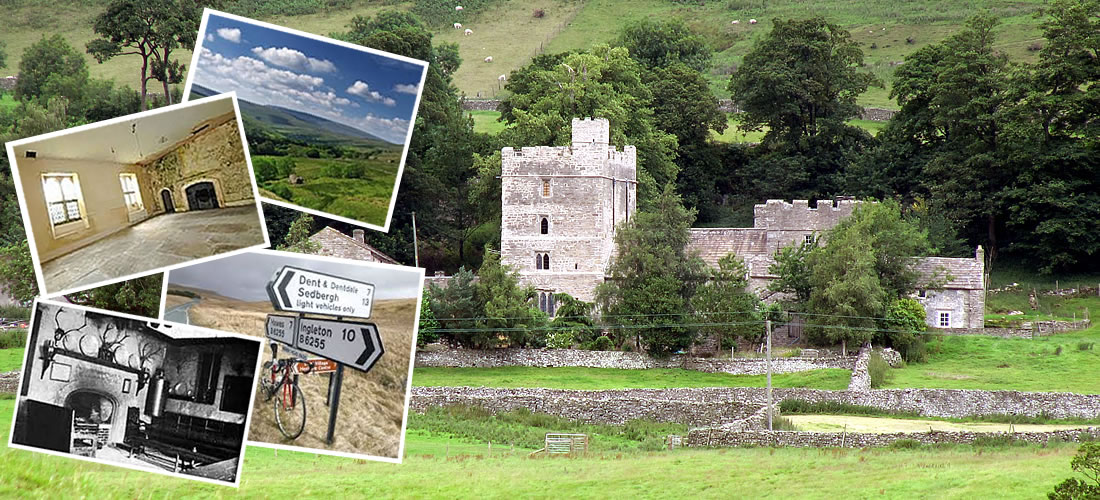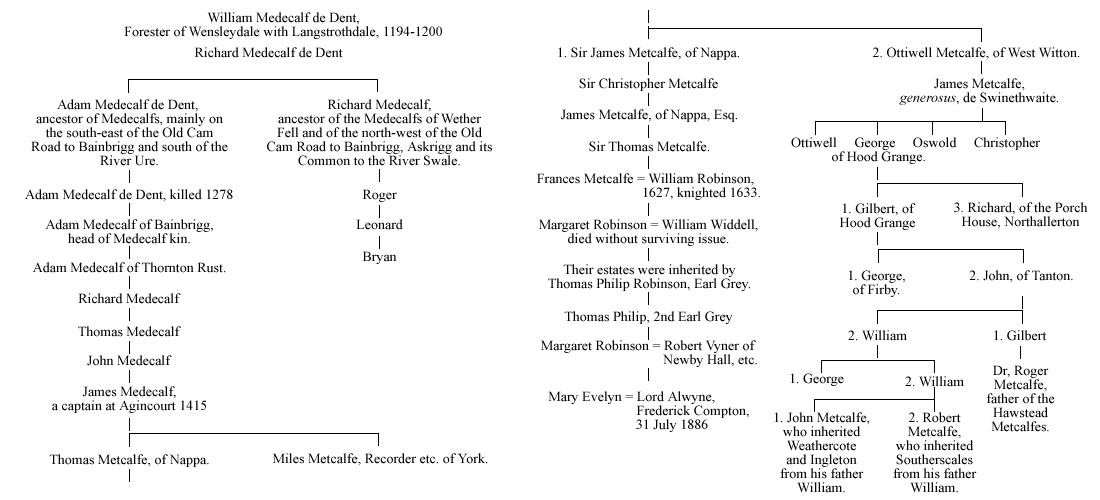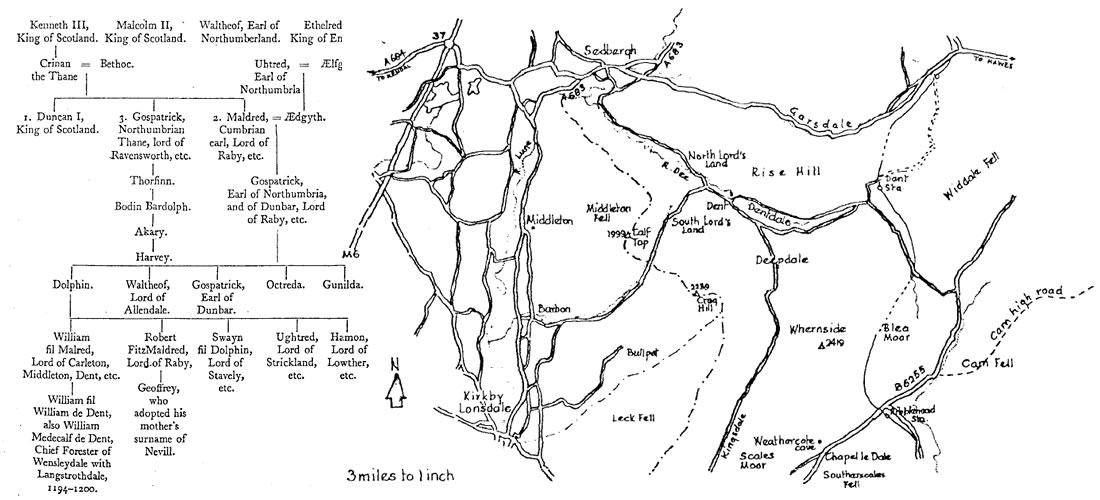History of the Metcalfe Name
Another Slant on the Name
Some centuries since as tradition makes known,
An Englishman plucky and stout,
On entering a certain enclosure alone
Was told he had better keep out.
That a dangerous bull in the pasture was kept,
From which he'd be sure of attack.
"Have no fears" said the yeoman, as bravely he stepped
O'er the stile, "but I never turn back".
He passed unmolested, till half way across,
When the bull his appearance put in,
With his two horny bayonets ready to toss
The intruder, and riddle his skin.
And rushed on his foe with his nose to the ground,
Closing up, ere collision, his eyes,
When the man on the watch, sprang aside with a bound,
Very much to the creature's surprise.
‘Twas a furious charge, yet the brute nothing hit,
Now, resistance, his tactics confused;
Just what to do next was too much for his wit,
In his confidence, so much abused.
On the instant, the man, while his foe is at fault,
Grasps hold of the animal's horns;
His turn having come, as he deems, to assault
Though advantage of weapon, he scorns.
Then giving a sudden and powerful twist
On the horns with his sinewy hands,
The joints of the spinal, they could not resist.
And dead dropped the bull on the sands.
Had he met the wild bull, he was asked the next day,
"Not a bull" unconcerned he replied,
But he had met a calf and attempted to play
With the weak little thing,
When it died.
Met-a-calf
As contracted to Metcalf, became
Our forefathers' cognomen then;
And it has, ever since, as a family name
Been respectably known among men.
Author Unknown
Submitted by R. Carr (M912) - found in her
Great Uncle's scrapbook (James Henry Metcalfe)
Medecalf, Medcalf, Midcalf, Metcalf, Metcalfe, Medkaff, Meadcalf etc
Research into the origins of the name Metcalfe and its variants suggest its earliest appearance might have been in the last quarter of the 12th century, which is roughly in line with what is known about the emergence of surnames in general.
The following account of the history of the Metcalfe clan is from the book ‘Medecalf’ by Rev Thomas Metcalfe, Vicar of Mytholmroyd 1906-1924, a copy of which can be purchased from The Society. The story was repeated in the Society's Mecca News Edition 3 in April 1981, supported by the map and two family tree lines.
When, in the 12th century the newly formed counties of Westmorland, Cumberland and the West Riding of York were formed, the boundaries ran along the tops of the ranges of hills passing along Holme Fell, Middleton Fell, Middleton Calf Top and Cragg Hill (map available). The occupier of Middleton Calf Top then was one William de Dent who become known as William Medecalf de Dent, Chief Forrester of Wensleydale with Langstrothdale. So the origin of the name Metcalfe in all its variations of spelling is said to be derived from Middleton Calf Top.
William Medecalf de Dent was the son of William fil Maldred de Dent whose grandfather was Gospatrick, Earl of Northumberland and Dunbar. The Earl was a direct descendant of Kenneth III, King of Scotland in the 10th century. Gospatrick’s son Dolphin, lord of the land of Carlisle, who in 1092 was driven out, became prominent because of his connection with the Sheriff of Yorkshire’s expedition against William the Lion in 1174. Dolphin had five sons of whom William was one. He made settlements of land on all of his sons and William held land at Dent, hence his name.
The descendants of William the Chief Forester of Wensleydale through his son Richard and great-grandson Adam, who became Chief Steward of Middleham, cleared and occupied that portion of the Forest of Wensleydale within the old parish of Askrigg, from where it joins that of Dent. These were the Medecalfs who went south of the Old Cam Road and Cam Fell, and to the east and south of Wither Fell. They descended from the heads of the rivers Ribble, Wharfe and others to the south of Penyghent, then eastward along the dales of the Wharfe and Nidd to Uredale (Wensleydale) from Bainbridge towards Middleham.
The descendants of Richard, grandson of William Medecalf de Dent went to the north of the Old Cam Road and cleared and enclosed that portion of the Forest of Wensleydale which had for its western boundary in the north, the head of the Ure from where it runs past Mossdale Moor, Widdale Head to Grove Head in the south; its boundary then turned north-east past Wether Fell to Bainbridge, then by Stag’s Fell to the Ure Head, all in the old parish of Askrigg. The lands occupied by the Medecalfs, although mainly within the Forest of Wensleydale with Langstrothdale stretched many miles beyond, and among the Medecalf descendants were well-to-do heads of various branches of the one family whih ‘in 1586 was reckoned and in 1607 was counted the most numerous in England’.
William Medecalf de Dent was supposedly the cousin of Geoffrey Fitzmaldred, lord of Raby, later called Geoffrey Nevill, according to the Rev Thomas, writer of the book (see source above). If this is indeed so, then a large number of Metcalfes, if not all, will be descendants of the royal lines of Scotland. The difficulty is for each and every one of us to prove this descent. The only way to justify such a claim is for each of us to prove it in our own case, but unfortunately for the majority, it will not be possible.
The assertion that Metcalfes do derive from the royal houses of Scotland, England and Denmark in the 10th century is supported by scholarly argument and evidence, much of which the Rev Thomas Metcalfe assembled.
The head of the clan would ride proudly at the Military Musters, leading men of his own name. The Metcalfes fought at Agincourt where they followed the Scropes of Castle Bolton. They fought well and, on returning James Metcalfe was awarded land at Nappa in Wensleydale, in return for his services. A small tenement known facetiously as 'No Castle' stood on the land, but James, who was ambitious and deeply proud of his family soon obtained a licence to build a battlemented hall which put 'No Castle' to shame. This was about the year 1416.
This high roofed 'halle' stood between two tall, strong battlemented and castellated towers. The capacious stables and outbuildings enclosed a large paved courtyard, access to which was by a deep, gated archway.
The Metcalfes of Nappa continued to prosper and climb the feudal ladder, and, during the reign of Henry VI the second James of Nappa became chancellor of the Duchy of Lancaster, and also held high offices in the lordships of Richmond and Middleham.
The third James followed Richard of Gloucester from whom he received ranks and honours in the lordship of Middleham. He was made master forester of Wensleydale, Raydale and Bishopdale and became High Sheriff of Yorkshire. His son Christopher also held that office and on one historic occasion he collected more than 300 Metcalfes to ride with him to do him honour in York. Mounted on white horses they rode to meet the Judge of the Assize, whom they escorted to York. Metcalfes fought also at Flodden Field and were in the forefront when Henry VIII needed the support of north-countrymen.
Today the name Metcalfe can be seen on many shop fronts, inn doors, cattle wagons etc. and no less than 2½ columns of the UK residential telephone directory covering Wensleydale, lists 20th century Metcalfes.
Most of us will not be direct descendants of the Nappa Hall Metcalfes, but many of us must be descendants of those who fought at Agincourt, or of the 300 who rode with the High Sheriff to York. The difficulty is proving it.
Find out more in the society’s book ‘Metcalfe - History of the Clan’. The first section details the origins of the family name. Other sources that suggest stories about the history and origin of the name include :








